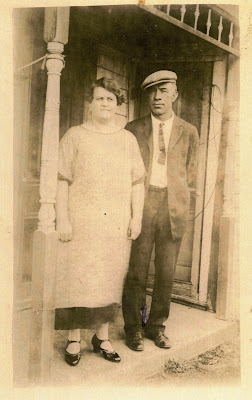It's the end of 2023 and the end of this blog.
Together, we've taken a look at the Linns, Olofsons, Barquists, Rasks, and others to whom we are related. We have much to be thankful for in our ancestry.
Farmers: John Barquist who gave up his position as fire manager in Sweden to bring his family to the United States, purchased land and farmed successfully only to see his land taken away by the state of Iowa in a case that went to the US Supreme Court. Peter Linn and other farmers who were Litchfield tenants/sharecroppers.
Helpers: Peter Linn and a neighbor hauling a large rock over 2 miles and 2 days to Dayton to serve as a memorial to the World War I veterans from the Dayton area. Doctors like Louise Blanche Linn, an early osteopathic MD. Relatives who cared for other relatives in their later years i.e. Veryl Olofson and his two sisters who took turns caring for their mother Olivia Rask Olofson.
Those with difficulties: Olof Olofson who was blind the last 40 years of his life. Kerstin Larsdotter, his mother, who was severely hard of hearing her entire life and whose twin sister died in Sweden of epilepsy. Olivia Rask Olofson who, in later years had dementia and paranoia about people trying to break into her house.
Religious leaders: John Linn who served as Bishop over 3 states and who started many churches in the Midwest. Peter Berg, husband to Julia Linn, who was also a well-respected minister.
Soldiers: Too many to list, going back to the early days of Sweden. Bertil Monsieur who, when Sweden was at war against Norway in 1719 got frostbitten feet so bad that he couldn't continue as a soldier. Louis Linn who marched with Sherman and was badly wounded. Gustus Linn who was taken prisoner during the Civil War and spent over a year as a POW. Frank and Peter Linn who served in France in World War I.
Those who were musical like Ivan Linn who performed on the Ted Mack Amateur Hour.
Ancestors who struggled with alcoholism and drug use.
Governors and advisors to the King in Sweden.
Those who lived to be over 100 and those who died way too young.
We are a family rich in history. And together, they have brought us to this point. I thank each for their contribution to our DNA, to our history, to our lives. And thank YOU for reading, for your questions, and for the new connections we have made.
I'm here anytime you have questions and want to email or call me. I'll still be working on our family history, scanning photos and documents, posting to my Ancestry.com tree.
Happy New Year!
Diane
On our cruise August 2023










